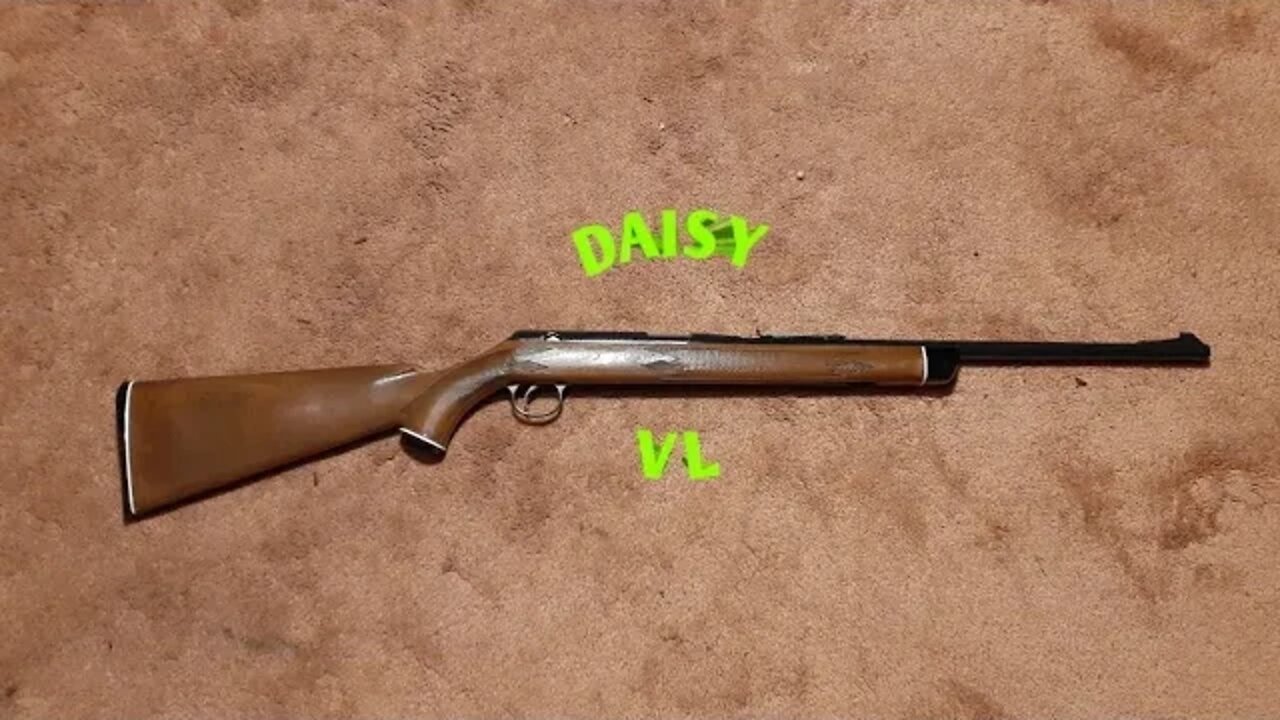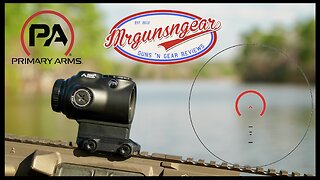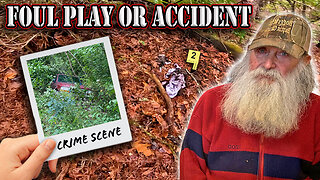Premium Only Content

Daisy VL
A spring piston air rifle that is actually a firearm. The Daisy VL.
A close up examination of the rifle and we will see if the VL will shoot a pellet with the air created by the compression chamber alone.Then will take it to the range and shoot the caseless ammo
My first test of the gun was a 14.3 grain pellet with the skirt expanded to fit the barrel. This test was done to see if in fact the VL is actually a air gun. my conclusion is. Yes the Daisy VL is in fact a air rifle. But a week one with the pellet consistently shooting at around 130fps. Then I wanted to shoot it at paper from 12 feet to conclude my test before going to the range, where it would be tested with the intended ammo.
A question to you. If you intentionally diesel a pellet using petroleum jelly, or another combustible substance does this make you airgun now a firearm?
Something to think about.
Only 19,000 of the standard ones and 5,000 of the presentation models were made in 1968 1969 the years before the ATF shut them dowm., But here is the thing. The VL wasn’t just a single shot .22. It was also a spring-piston air rifle.
The Daisy VL rifle is a single-shot spring-piston rifle cocked by an underlever. Load the cartridge in the breech — exactly where a pellet would be loaded.
And yes it can also shoot a pellet. But at a lower velocity around 130fps. So in fact it is technically also a pellet rifle.
The VL is a caseless cartridge developed by Belgian chemical engineer Jules Van Langenhoven. Hence VL. The charge is ignited by high temperature compressed air. The kind of air that’s generated by a spring-piston air rifle. The Daisy VL is a .22-caliber underlever single shot spring-piston air rifle useing a combustible charge to obtain its maximum velocity.
When you work the cocking lever of the V/L rifle, a cylinder and piston are forced to the rear, compressing a very heavy spring. The breech is now open and you can place a V/L round in the chamber. When the cocking lever is reseated, it brings the cylinder forward, closing the breech. The piston is held in the cocked position by a sear, ready to fire.
rapidly compressed, forced through a small hole and around a ball check valve. The rapid compression of the air causes an extreme rise in temperature. In the V/L rifle, the jet of heated air ignites the propellent attached to the projectile.
The ball check valve instantly closes, and the full energy of the propellent is focused on pushing the projectile down the barrel. A 29-grain projectile heading to the target at 1150 feet per second.
Now pull the trigger. The sear releases and the heavy spring drives the piston forward in the cylinder. The air in the cylinder is super heated and ignites the propellant firing the gun.
-
 8:40
8:40
Tundra Tactical
18 hours ago $1.50 earnedThe Executive Order Wishlist.
6.49K1 -
 7:22:52
7:22:52
SpartakusLIVE
17 hours agoSaturday SPARTOON Solos to Start || Duos w/ StevieT Later
94.7K2 -
 28:40
28:40
SLS - Street League Skateboarding
8 days agoTOP MOMENTS IN WOMEN’S SLS HISTORY! ALL THE 9’s - Rayssa Leal, Leticia Bufoni, Chloe Covell & more…
53.5K11 -
 2:03:03
2:03:03
The Connect: With Johnny Mitchell
14 hours ago $2.09 earnedHow Mexican & Chinese Cartels Control Illegal Marijuana Cultivation In America Using SLAVE Labor
8.92K3 -
 14:46
14:46
Mrgunsngear
16 hours ago $1.02 earnedPrimary Arms GLx 1x Prism With ACSS Reticle Review
8.14K6 -
 22:37
22:37
Degenerate Plays
15 hours agoI'm A Psychic Now - Elden Ring : Part 73
3.03K -
 2:32:02
2:32:02
Jamie Kennedy
8 hours agoEp. 195 Horror Legend Barbara Crampton
4.86K -
 23:00
23:00
Exploring With Nug
1 day ago $32.91 earnedHis Truck Was Found Crashed in the Woods… But He’s Gone!
135K8 -
 27:09
27:09
MYLUNCHBREAK CHANNEL PAGE
1 day agoDilmun: Where Life Never Ends
102K59 -
 2:58:32
2:58:32
Slightly Offensive
19 hours ago $106.87 earnedHas Trump FAILED US? The ABSOLUTE STATE of The Right Wing | Guest: Nick Fuentes
151K211